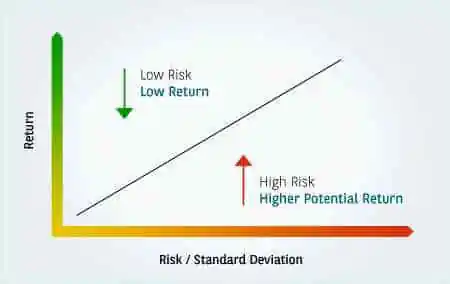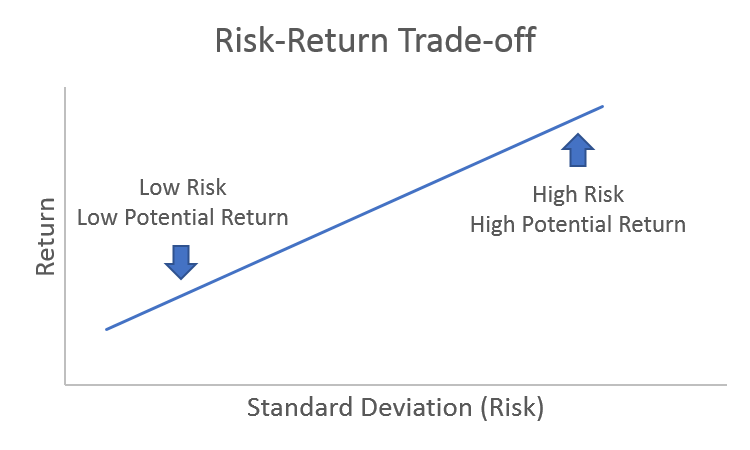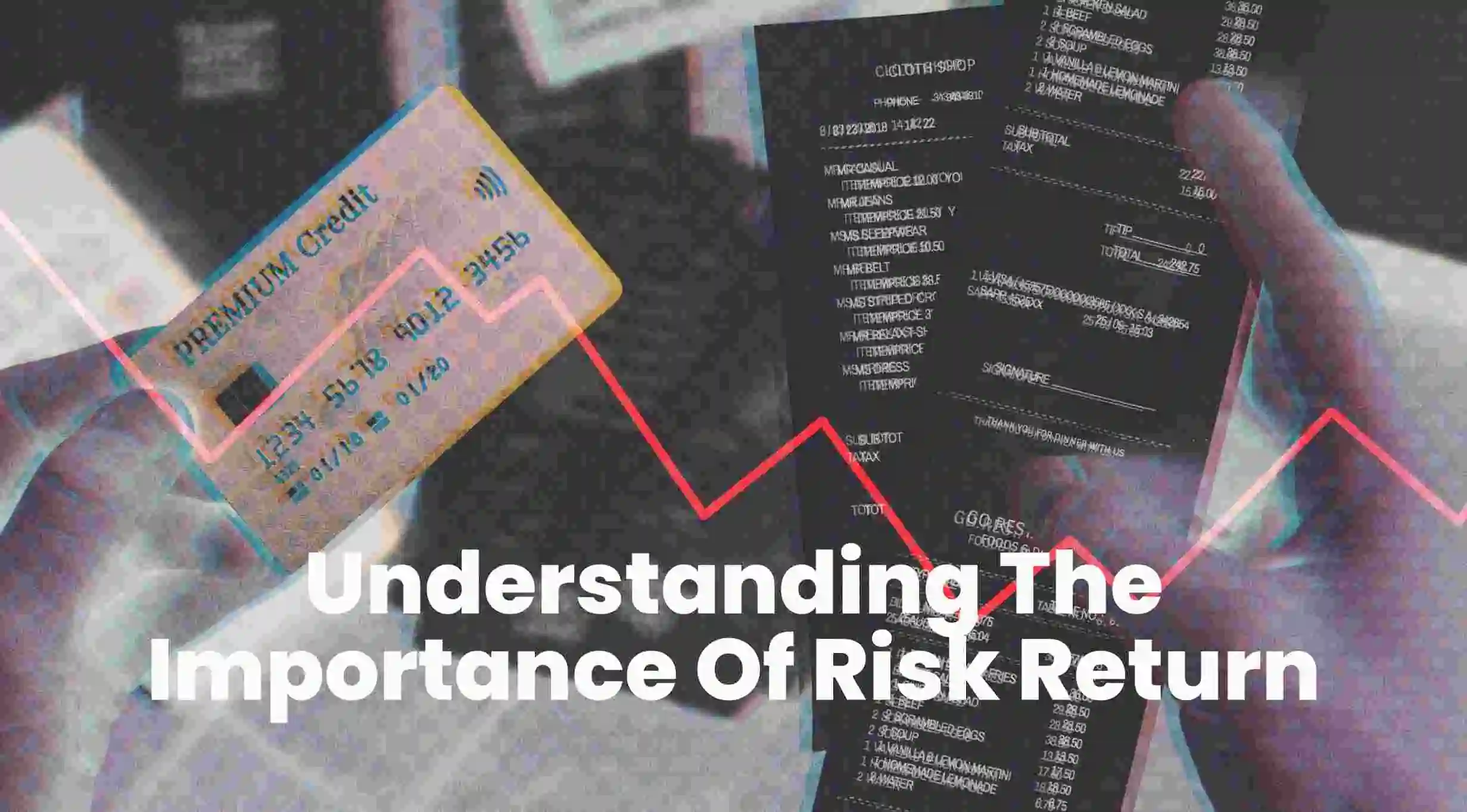“Stocks are risky. Bank deposits are safe. Don’t buy stocks! Keep your money safe.” Haven’t you heard such statements before? We are sure you have.
Mastering the relationship between risk and return is crucial for success in stock market investing. Understanding how risk and return interact can help investors make informed decisions, manage their portfolios effectively, and achieve their financial goals. By delving into the dynamics of risk and return in stock market investing, investors can develop strategies to balance risk tolerance with return expectations, optimize their investment decisions, and navigate the complexities of the market with confidence. In this discussion, we will explore the intricacies of the risk and return relationship in stock market investing and provide insights on how investors can leverage this dynamic interplay to enhance their investment outcomes.

But unfortunately, stocks don’t go up in straight lines. Stocks are volatile and can move up or down sharply. This is unlike bank deposits, which are almost guaranteed to give fixed returns promised at the time of booking the deposits. But before you draw a negative conclusion about stocks, it is important to understand that its the very nature of stocks (as an asset class), which makes it a volatile asset class for the short term. But when you increase the period under review, its found that stocks (and equity mutual funds) give much higher average returns than what is given by bank deposits, or for that matter, any other asset class.
But nothing comes for free in this world. Same is the case with high returns of stocks. These come at a cost -higher volatility in the short-term.
Or looked at from another perspective, an investor in stocks needs to be compensated for taking higher risks. This is achieved by means of higher returns that stocks provide.
Understanding this relationship between risk and return is very important and can help an investor make correct financial decisions, based on their risk appetite and return requirements.
What is Risk?
A very formal definition of risk is the likelihood that actual returns will be less than historical and expected returns.
But to put it very simply, the risk is the possibility of losing your money that is invested as principal. For example – You invest Rs 20,000 in stocks today. The next day, the markets go down and reduce the value of your investments to Rs 18,000. That is the primary risk when you invest in stocks.
But stocks are not the only assets that have risk. All investments have their own share of risks. The risks however vary in type and degree.
So even when you keep you money in bank deposits offering 5.5% returns (after-tax), there is another kind of risk that you are taking – inflation risk. Your investment might not keep pace with inflation, which will reduce your purchasing power in the future.
Risk can come from many other factors too. Like volatility in stock markets, inflation, changes in currency exchange rates, changes in business dynamics, changes in the economy, geo-political developments, etc.
But generally, the investments that are considered to carry higher risks have the potential to deliver higher returns. On the other hand, investments with lower expected returns (like bank deposits), carry lower risks.

What is Return?
This is quite simple. Returns are simply the amount you get (or lose) on the invested amount. It is generally calculated on an annual basis.
As mentioned earlier too, the asset, that gives higher returns, is generally expected to have higher levels of risk.
Risk and Return Relationship
The risk and return relationship is a fundamental concept in investing that highlights the trade-off between the potential for higher returns and the level of risk an investor must assume. Generally, higher returns are associated with higher levels of risk, as riskier investments have the potential for greater gains but also a higher potential for losses. Understanding this relationship is essential for investors to make informed decisions that align with their financial goals and risk tolerance. By balancing risk and return effectively, investors can optimize their investment portfolios for long-term growth and stability.
Try finding an asset, where there is no risk. Chances are that you will end up with an asset giving very low returns. Again try finding an asset that offers very high returns. We are sure you would have chosen a very risky asset.

Now risk cannot be eliminated completely. At best, investors can manage the risk in their investments.
So when investing in shares, you can either have a concentrated portfolio of few stocks or a diversified portfolio of many stocks. The risk with holding a concentrated portfolio is that if the value of even one company goes down, it will have a big impact on the overall portfolio returns.
Instead to reduce the risk, one can choose to invest in a diversified portfolio of stocks. This way, a fall in the share price of even few stocks will not have a large negative impact on the overall portfolio returns. This is the exact principle on which fund managers build mutual fund portfolios.
Another way to reduce risk is to diversify across assets and hold a portfolio of stocks, bonds, bank deposits, gold, and other assets. What happens then is that bank deposits, bonds, gold, etc. will provide stability to the portfolio, albeit at the cost of lower returns. Stocks on the other hand will provide higher long-term returns and improve overall portfolio returns.
Time also plays a big role in deciding the returns obtained by investors. It has been empirically found that when investing in good stocks, the longer your investment horizon is, the lower the associated risks and returns are comparatively better than other asset classes. Having a long investment period averages out the short-term volatility of returns.
Humans have a tendency to reduce risks that they take. You too can choose to invest only in safe assets like bank deposits or hold cash. But then, your investments will lose value over time (due to inflation). And you don’t want that.
It's better to assess your risk tolerance and choose investments intelligently. Taking on some risk is necessary to achieve adequate returns. So try and find the ideal balance for your investments, which gives you the best risk-adjusted returns for your investments.



